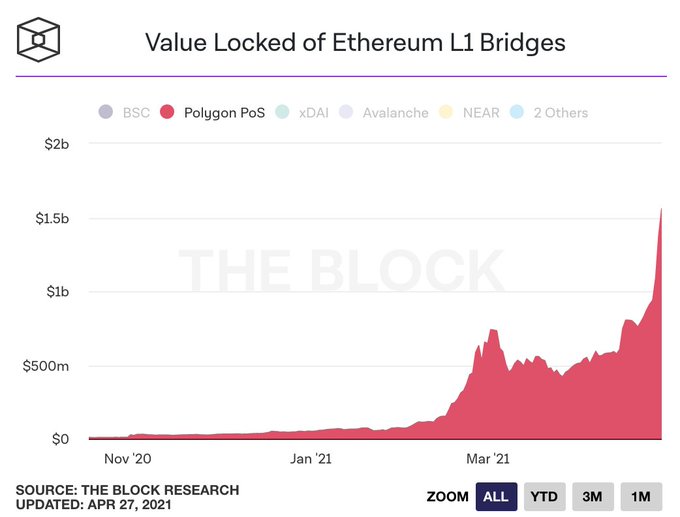The crypto market is trending to the upside and recovering some of its last week’s gains with Polygon (MATIC), and other altcoins following the general trend. Digital assets seem to be positively reacting to the earnings reports from legacy companies.
Related Reading | Why The IMF Thinks The Crypto Market Could See “Further Selloffs”
At the time of writing, Amazon (AMZN) beat earnings expectations generating over $130 billion in net sales. Apple (AAPL) also beat expectations with $83 billion reported in earnings.
Amazon +10% pic.twitter.com/T4twX73AKG
— TradingView (@tradingview) July 28, 2022
As a result, the S&P 500 recorded a 1.23% increase at the U.S. close with the Nasdaq and the Dow Jones trading in the green. The crypto market benefited from these reports, as it continues to move in tandem with legacy financial markets.
Top crypto analyst Michaël van de Poppe celebrated AMZN and AAPL’s positive price moves. The analyst believes the price action in equities will continue to spill into the crypto market. Via Twitter, van de Poppe said:
we’re definitely ready for fireworks (…). The entire market looks ready to continue moving heavily. Many altcoins & Bitcoin breaking above 50-Day Moving Average. Bitcoin breaking above 200-Week Moving Average. Looks to me to see a continuation on those altcoins for 100-200%.
The analyst singled out Solana (SOL), Polygon (MATIC), Cosmos (ATOM), Avalanche (AVAX), and others with the best potential to benefit from a long-term bullish trend. These cryptocurrencies have the potential to record 60x returns “in the next bull cycle”, van de Poppe said.
In the short term, as mentioned above, these altcoins could register as much as 100% to 200% gains if the bullish momentum extends. The analyst claims most of these altcoins have broken above key moving averages and might find little resistance as they reclaim previously lost territory.
According to this analyst, Avalanche (AVAX) alone could hit a target of $37 to $41. Solana on the other hand might hit $62 to $84 and Polygon beyond the $1 mark.
MATIC’s price records important gains on the 4-hour chart. Source: MATICUSDT Tradingview
Can Polygon (MATIC) Benefit From A Crypto Summer Rally?
The analyst claims the crypto market stands to benefit from a relief rally on the back of a dovish U.S. Federal Reserve (Fed). The financial institution has been trying to mitigate inflation by hiking interest rates, and according to market expectations, this metric should trend lower in its July print.
In addition, the Ethereum “Merge” was set for September 2022. This event is considered highly bullish for the cryptocurrency which has provided ETH bulls with enough strength to push the market to the upside.
Related Reading | Bitcoin Makes Surprise Climb As Fed Discloses 0.75 Point Rate Bump
Polygon (MATIC), Avalanche (AVAX), Solana (SOL), and Cosmos (ATOM) might prove good bets in the long run due to the upcoming products, their partnerships with major players in and outside the crypto industry, and their development teams.
Ideal ingredients for a Summer Relief Rally are there:
Powell becoming dovish on policy and more data-dependent.
$ETH merge coming up in September.
Heavy impact on 3AC, Celsius, and more already priced in.
I’m seeing $ETH to $2,400 and $BTC to $28,000-30,000.
— Michaël van de Poppe (@CryptoMichNL) July 27, 2022

 We know how much dragons value their treasure & wouldn't want you to part with yours
We know how much dragons value their treasure & wouldn't want you to part with yours We aren't tax experts & can't give tax advice, but stock splits aren't taxable events & token splits shouldn't be either
We aren't tax experts & can't give tax advice, but stock splits aren't taxable events & token splits shouldn't be either NrdGrl007
NrdGrl007 
 (@nrdgrl007) March 7, 2022
(@nrdgrl007) March 7, 2022


